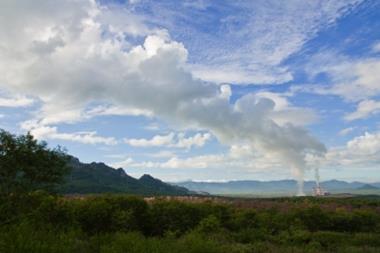As the UK slowly adjusts to some of the extreme weather conditions of recent years, including long spells of almost desert-like drought and, for the first time ever, temperatures of 100 degrees Fahrenheit last year, followed by extremes of wet weather this year, it is time to consider the risk management implications.
The climate has been changing for some time now. By 2100 more extreme weather is expected to become the norm; for example experts are predicting more severe and frequent heatwaves.
There has already been widespread coverage of flooding, and the Environment Agency has led the way in identifying risk improvement measures for those areas prone to flooding. However, in some parts of the country the prospect of excessively dry summers is a greater concern.
Subsidence is a risk that is particularly related to climate. And ALARM believes that subsidence is a growing risk for the public sector and could have huge implications if the problem is not carefully managed.
Excessive dry spells reduce ground moisture, leading to a potential for subsidence and property damage in areas affected by shrinkable clay soils.
Ground movement occurs as a result of the shrinkable clay contracting as it dries out, and subsidence damage usually results from uneven contraction of the soil during this process. Such differential ground movement can place intolerable strain on buildings, leading to subsidence and structural damage. The risk posed by urban trees, many of which have root zones which extend to adjacent properties, can therefore be significant.
Homeowners in Britain have long identified subsidence as a major concern when considering the saleability of houses. The tolerance for even the smallest subsidence-related cracks in the UK is very low. A recent Association of British Insurers' report suggests that subsidence is dealt with more pragmatically in other countries.
First and third party claims
For local authorities, subsidence poses a large threat for a number of reasons. As well as the need for expensive repairs where subsidence actually occurs to council properties, there is also the potential for third party claims.
Encroachment of roots into a third-party property leads to claims for damage, and dealing with such claims under liability insurance requires careful management and high resource demands. In identifying the cause and managing trees, various conflicts exist for councils. Many trees have preservation orders on them or are part of a 'green' management policy and the green lung of urban areas.
Tree management aside, there is then the need for the ground to recover its equilibrium before repairs can be undertaken. Resolution of such claims can take months if not years and extreme weather conditions can add to these timescales.
The potential for a significant increase in claims is accompanied by the related likelihood of increased liability premiums. The damage and detriment that is an inevitable part of subsidence will fall on the shoulders of councils where properties affected are council-owned, and could be at a level not previously experienced - which means that they will not have been sufficiently resourced or budgeted for.
Council-owned properties often have no cover for subsidence within the local authority insurance arrangements. Therefore, the costs tend to fall on the budgets of housing and other services affected. The resource implications and inevitable budgetary difficulties are high.
Solutions
So what can be done to solve the problem? Councils need to start identifying the risks from the outset and acting immediately. With climate change an accepted phenomenon, councils need to take the following steps:
- identify their urban trees in areas of shrinkable clay which are in sufficient proximity to buildings to have the potential to affect them
- develop arboricultural programmes to provide regular monitoring and planned management of the trees.
When damage to third party property occurs there is almost invariable pressure for the offending trees to be removed and this tends to conflict with the council's policies on retaining trees for their amenity value.
Pro-active management of trees can avoid such situations. Regular pruning or crowning regimes restrict trees' water demand, reducing the effect they have on surrounding soils. In cases where tree removal is unavoidable the need can sometimes be identified and removal carried out before damage occurs, thereby saving the costs of a repair. A tree removal programme can often be accompanied by replacement with a more suitable species, thus retaining the amenity value of urban trees.
By recognising the risk now, ALARM believes that measures can be taken to eradicate the potential for damage, and subsequent claims. ALARM chairperson Carolyn Halpin says: "The dangers of subsidence should not be under-estimated, and as extreme weather conditions become more frequent, so the importance of robust risk management policies to minimise budget demands and claims increases.
"By recognising the benefits of planning for such climate changes, for instance, reviewing arboricultural policies and being aware of the potential of ground movements, councils should not be caught unawares."
Gemma Rogers writes on behalf of ALARM - The National Forum for Risk Management in the Public Sector, Tel: 01395 223399,



















